A Global Network of Coastal Sites
Established in 2023 following the inclusion of Hurst Castle, UK, on the World Monuments Watch, the Coastal Connections program is a joint initiative between World Monuments Fund (WMF) and English Heritage that aims to form a global network of coastal heritage sites by bringing together communities and organizations to share their knowledge and expertise.
Global in scope, the project will enable custodians of coastal heritage sites around the world to learn from each other. You can sign up for more information by clicking here.

Left: Methoni Castle (Ronny Siegel/Wikipedia); right: Cape Coast Castle (Rjruiziii/Wikipedia).
Coastal Connections will develop tools and principles for guiding future management decisions. These range from the construction of sea defenses to citizen science and community engagement for remembering and recording heritage.
Crucially, it will also engage with approaches such as “adaptive release” that become necessary when protection becomes unsustainable in the face of climate change.
Through the development of its network and resources, Coastal Connections will enable us to meet the challenges of climate change together.
Why Is Coastal Connections Needed?
Coastal zones are among the most dynamic and volatile environments on the planet. They also include some of our most treasured heritage sites.
As the rate of climate change accelerates, addressing its impacts poses the greatest and most complex challenges that we have ever faced. These challenges are exceptional, but they are not unique. Coastal processes have shaped shorelines—and communities—for millions of years. We believe that sharing knowledge with other communities and organizations who face similar challenges is the best way to adapt, learn, and build resilience.
What Is WMF Doing?
We’re working with English Heritage and site managers around the globe to protect historic coastal sites against the effects of climate change, such as rising sea levels and the increasing frequency of severe storms.
These impacts have made coastal heritage even more vulnerable than before. Each year we see more evidence of damage caused by erosion and flooding, which in turn requires us to take action to conserve these sites.
Starting in January 2024, we will be launching a series of webinars for those involved in safeguarding coastal heritage sites. We are also developing a virtual classroom that will contain online resources to promote best practice in conserving our treasured coastal heritage.
We believe that by sharing knowledge and expertise from managers and practitioners around the world, we will enhance our management of these sites and improve their resilience for the challenges ahead.
World Monuments Fund’s Coastal Connections project has been made possible, in part, by support from the Paul Mellon Fund for Architectural Preservation in Great Britain.
Resources
Online Workshops
The Coastal Connections program incorporates a series of online workshops for sharing knowledge, expertise and best practice in addressing the impacts of climate change on coastal heritage. Each workshop focuses on a relevant theme and features expert talks on selected sites and projects, followed by a roundtable discussion. We welcome participation from site managers, conservation professionals and all who care for heritage sites in the coastal environment and beyond. To join us, please sign up and register via Eventbrite.
Rising Seas and Storm Surges: Climate Change and the Future of Coastal Heritage
An On My Watch webinar discussion to introduce Coastal Connections, with Rob Woodside (English Heritage), Vanessa Keith (Studioteka) and Rohit Jigyasu (ICCROM), hosted by Alex Kent (WMF/English Heritage).
Workshop 1: Understanding the Significance of Coastal Heritage
Introduced by John Darlington (World Monuments Fund), this workshop explores how significance is defined in the context of different cultural heritage sites around the world, including Rapa Nui (Easter Island) and Hurst Castle in England. Speakers include Roy Porter (English Heritage), Stephanie Ortiz (World Monuments Fund), Caitlin DeSilvey (University of Exeter), Peter Cox (ICOMOS) and Tom Colwill (Historic England).
Workshop 2: Sustainable Engineering Solutions
Introduced by Rob Woodside (English Heritage), this workshop examines a range of hard engineering and nature-based solutions for the conservation of coastal heritage sites worldwide, including Fort Berkeley (Antigua), Cape Hatteras (North Carolina, USA) Venice, and many more. Our international panel includes Christopher Waters (National Parks Authority, Antigua), George Jaramillo (US National Parks Service), Francesca Ingrosso (Venice Sustainability Foundation) and Rohit Jigyasu (ICCROM).
Workshop 3: Communities and Intergenerational Stewardship
Introduced by Scott Goodwin (WMF), this workshop shows how initiatives for engaging with communities are making a difference to the stewardship of coastal heritage sites around the world, from relocating historic structures to recording archaeology. Panellists include Francesca Churchill-Zerilli, Espéra Donouvossi, Mark Harrison, Mohammed Mwenje and Paul Vitty, who have led community heritage projects in Kenya (Youth Heritage Africa) or in the UK (Bude-Stratton Town Council and Historic England).
Workshop 4: Mapping, Modelling and Monitoring
Introduced by Alex Kent (World Monuments Fund/English Heritage), discover how new techniques in mapping, monitoring and modelling can expand our understanding of the impact of climate change on coastal heritage. We examine a range of case studies from around the world, including Oman, Belgium, the Dominican Republic and the United Kingdom, to see how these technologies are supporting the sustainable management of these sites. The panel includes Amira Al Balushi (ITC, Netherlands), Soetkin Vervust (Testerep/Vrije Universiteit Brussel, Belgium) and Mark Cannata (Kassandra, Italy).
Case Study Factsheets
Our series of accessible, short introductions to the challenges, processes, solutions and possible futures for coastal heritage sites around the globe. Co-created with site managers, they provide an authoritative compendium of real-world case studies that describe the impacts of climate change on coastal heritage and how these are being addressed.
Featured Coastal Sites
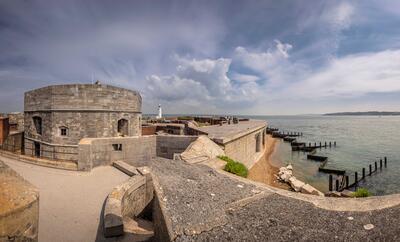
Hurst Castle, UK
The long-term survival of this sixteenth-century fort depends on the ability to protect it from the action of the sea, made ever harder by sea level rise and more frequent storm surges.
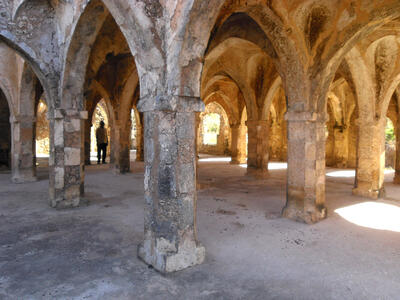
Historic Sites of Kilwa, Tanzania
Home to some of the most significant historic sites along the Swahili coast, Kilwa is threatened by rising sea levels exacerbated by the reduction of protective mangrove forests.
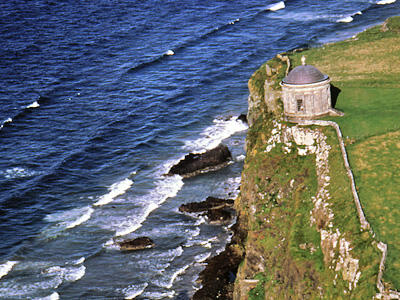
Mussenden Temple, United Kingdom
One of the most photographed monuments in Northern Ireland, Mussenden Temple's dramatic location leaves it highly vulnerable to coastal erosion, which has caused the cliff supporting the structure to recede
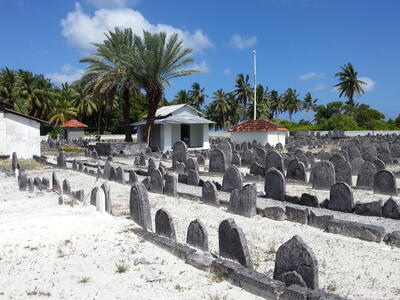
Koagannu Mosques and Cemetery, Maldives
This heritage site and its island home are seriously threatened by sea level rise, while the coral reefs surrounding Maldive’s 26 atolls are impacted by rising ocean temperature and acidity
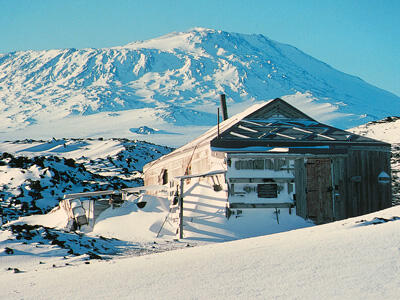
Scott's Hut and the Explorers' Heritage of Antarctica
These surviving wooden structures are a remarkable testament to the first expeditions on the continent, but shifting weather patterns over Ross Island threaten the buildings.
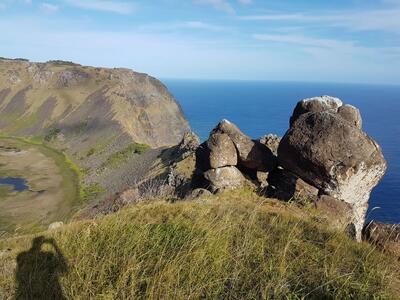
Rapa Nui (Easter Island), Chile
The village of Orongo, located in the island's south, is considered among the most spectacular archaeological sites in the world, but the site’s exposure has led to structural instability and the loss of irreplaceable petroglyphs.
